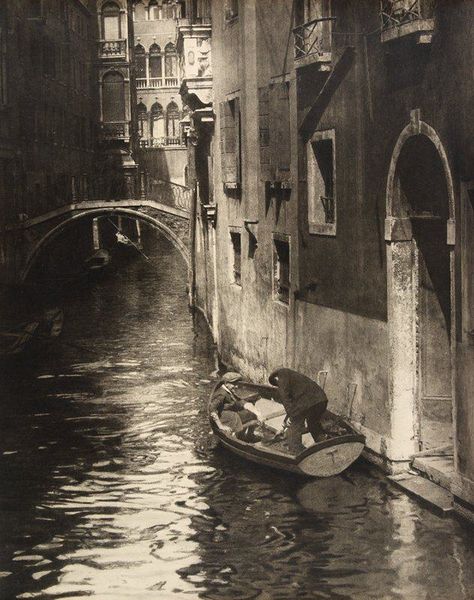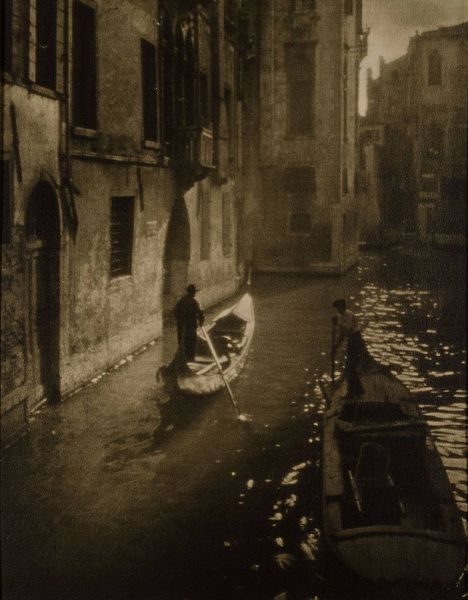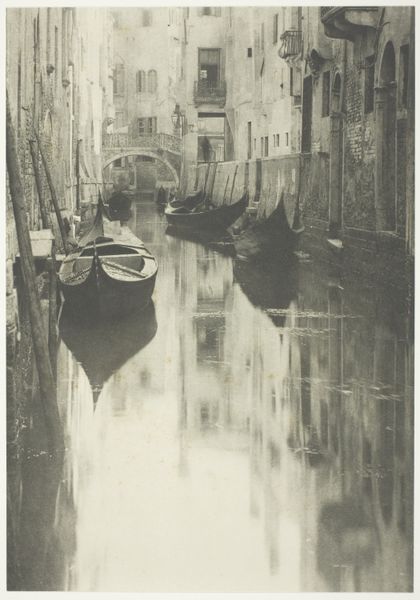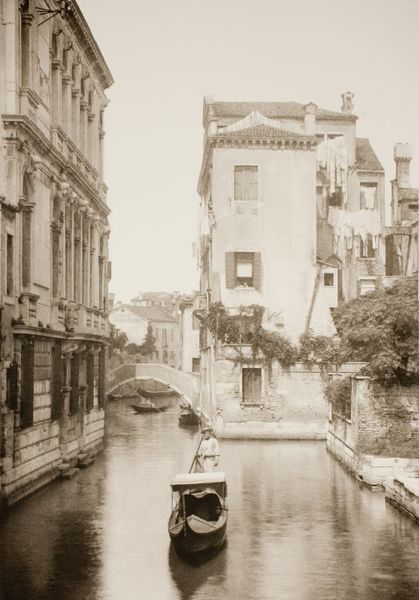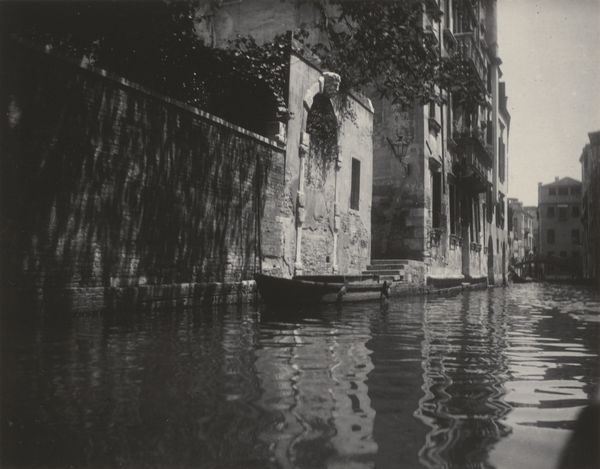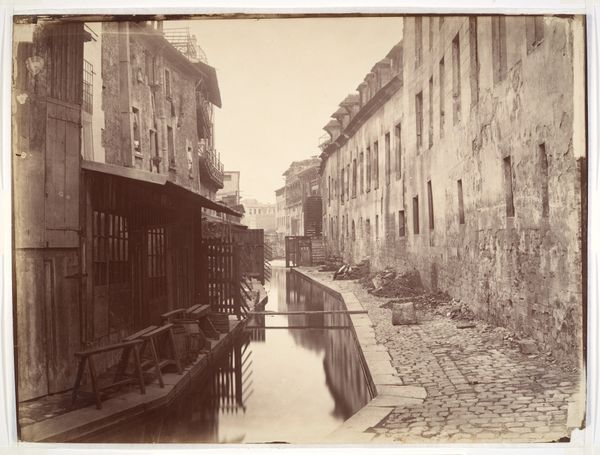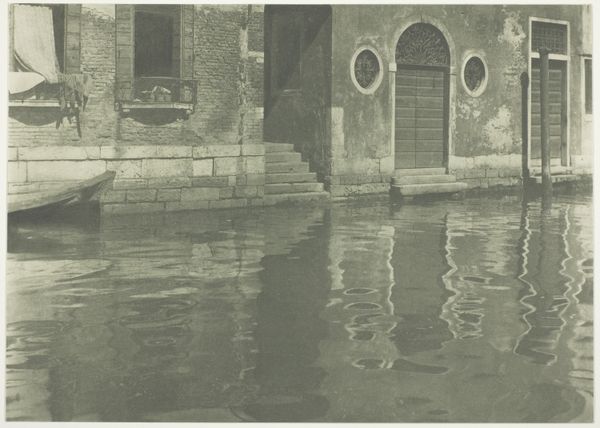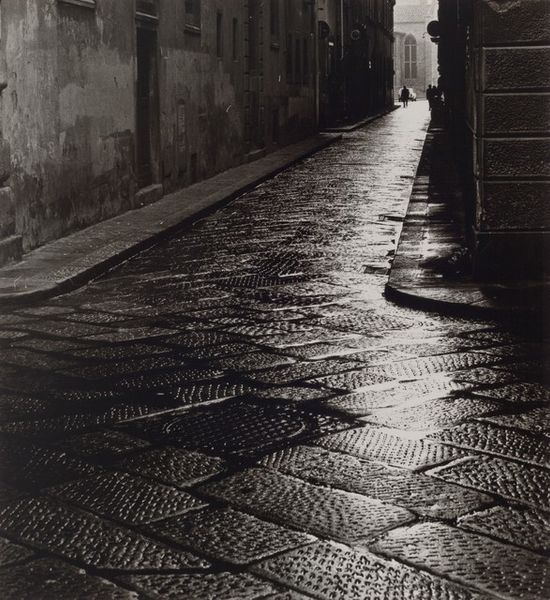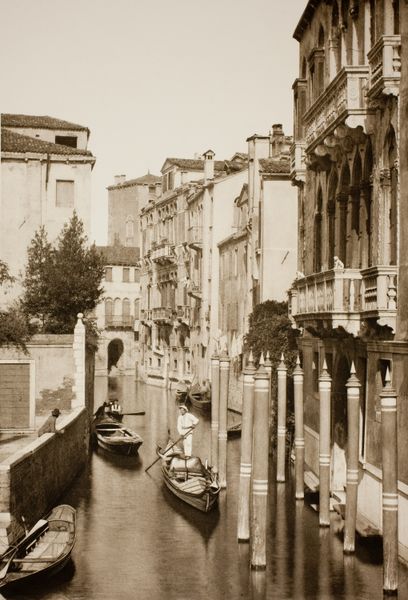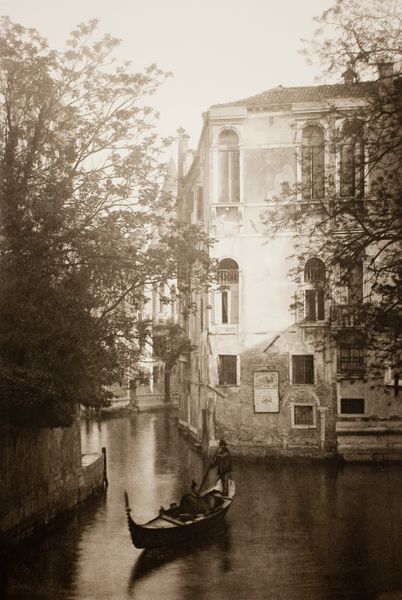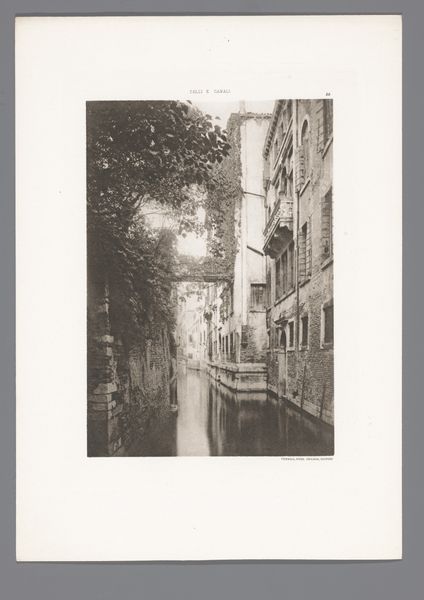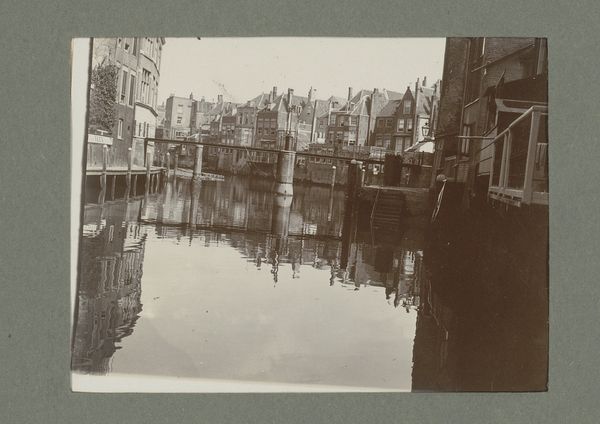
Dimensions: sheet (trimmed to image): 22.4 x 16.8 cm (8 13/16 x 6 5/8 in.) mount: 34.6 x 27 cm (13 5/8 x 10 5/8 in.)
Copyright: National Gallery of Art: CC0 1.0
Editor: This gelatin-silver print, "Venetian Canal," is attributed to Alfred Stieglitz, possibly created between 1894 and 1934. The photograph, a study in monochrome, portrays a quiet Venetian waterway, its buildings reflected in the water's surface. The stillness is captivating, almost melancholic. How do you interpret this work? Curator: What strikes me most is how Stieglitz uses the aesthetic of Pictorialism – those soft, almost painterly qualities – to depict a city traditionally romanticized. Venice was, and still is, a powerful symbol in Western imagination, often associated with wealth and decline. How does Stieglitz, an American artist, engage with this European icon? Is he reinforcing a certain stereotype, or is he trying to see Venice, perhaps, as mirroring something about his own society? Think about industrialization, social disparities. Editor: So, you see a dialogue between America and Europe? Curator: Exactly. Stieglitz was deeply invested in elevating photography to the level of fine art. By photographing Venice, a subject already heavily laden with artistic history, he’s entering a conversation. He's also potentially commenting on the impact of modernity on these historically important sites. Consider the lack of human presence; does it feel elegiac to you, as though we’re witnessing a past slipping away? Editor: It does have a sense of loneliness to it, the way the light falls. A bit haunting, really. Curator: That haunting quality invites us to think about whose stories are typically told, whose voices are amplified in depictions of cities like Venice. Stieglitz captures the architecture, the reflections, but where are the everyday people? It’s in that silence, I think, that the work speaks volumes about power, representation, and the gaze. What would this photograph convey if he had shifted the lens? Editor: It's amazing how much historical and social context can be layered into a seemingly simple photograph. Thank you for this perspective. Curator: My pleasure. Hopefully, this inspires you to think about how artworks often operate as critical interventions within much larger social and cultural conversations.
Comments
No comments
Be the first to comment and join the conversation on the ultimate creative platform.
